This week's theme for the Homestead Photography Contest is Red On The Homestead. I love these contests. We are so used to walking around the homestead and doing our daily chores, we often forget to look around and see what's happening in the garden or on the homestead at the moment. These contests gives me a chance to use my creativity and imagination. I find myself wondering what the new theme will be each week. Seeing what everyone comes up with is always interesting to see. Thank you for hosting the contest each week @knowledge-seeker!
I use the themes of these contests to explain why I have certain things on my homestead and even learn the names of newly identified plants that I may have never taken the time to look up
Red on the Homestead
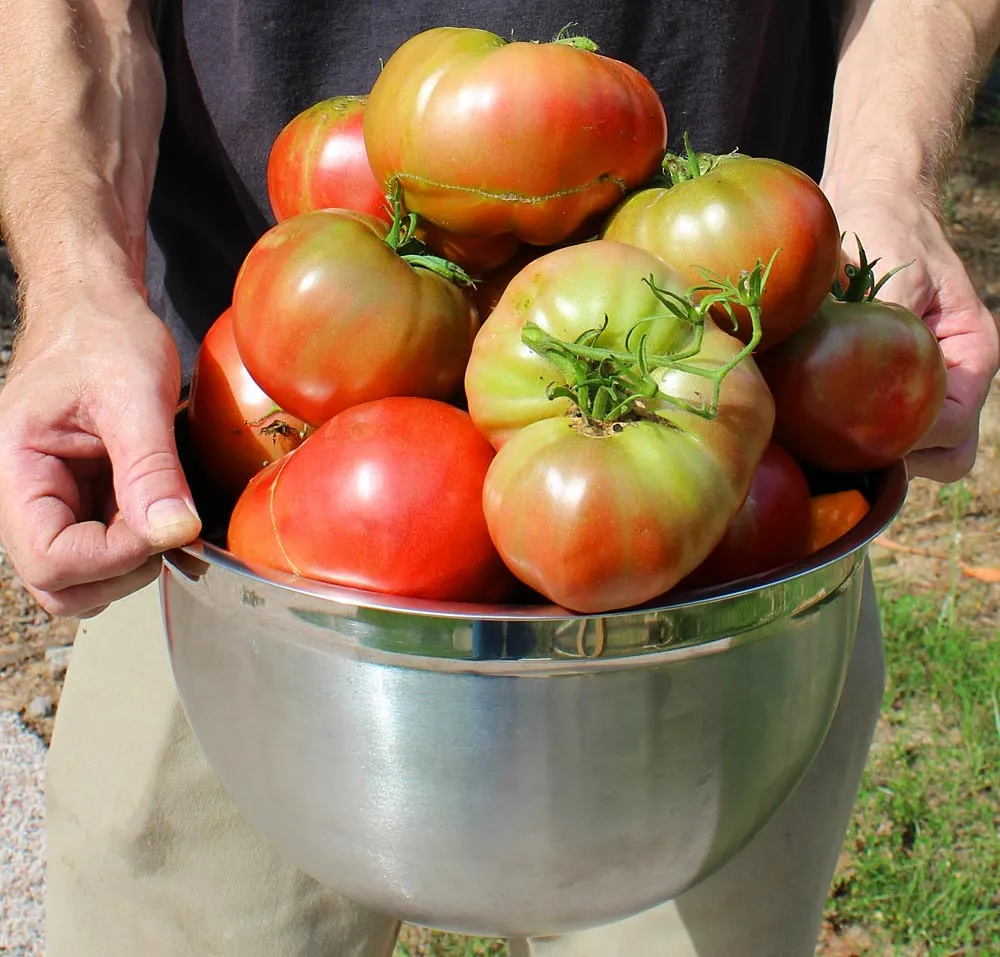
Heirloom Tomatoes
We are already harvesting tons of heirloom tomatoes, Paul Robeson, Cherokee Purple, Black Krim, Pineapple tomato. I don't always get tomatoes each year. Not sure of the reason, but in my garden sometimes certain varieties of tomato will die one by one when they start producing. This year is no different. I have already had four plants that mysteriously died on me. I learned from Grow a Little Fruit Tree that
Warm castings are like an alternative medicine of the plant world. Worm castings are rich in growth hormones, nitrogen, minerals, micro-nutrients, and microbes. Most remarkable is the castings' proven ability to control soil borne fungus disease. Worm castings seem to accomplish this systemically.
Since I still have not figured out the reason for the deaths of my tomato plants. My strategy this year is to put a layer of warm castings down as mulch on top of these beds. We will see if this helps for next years planting.
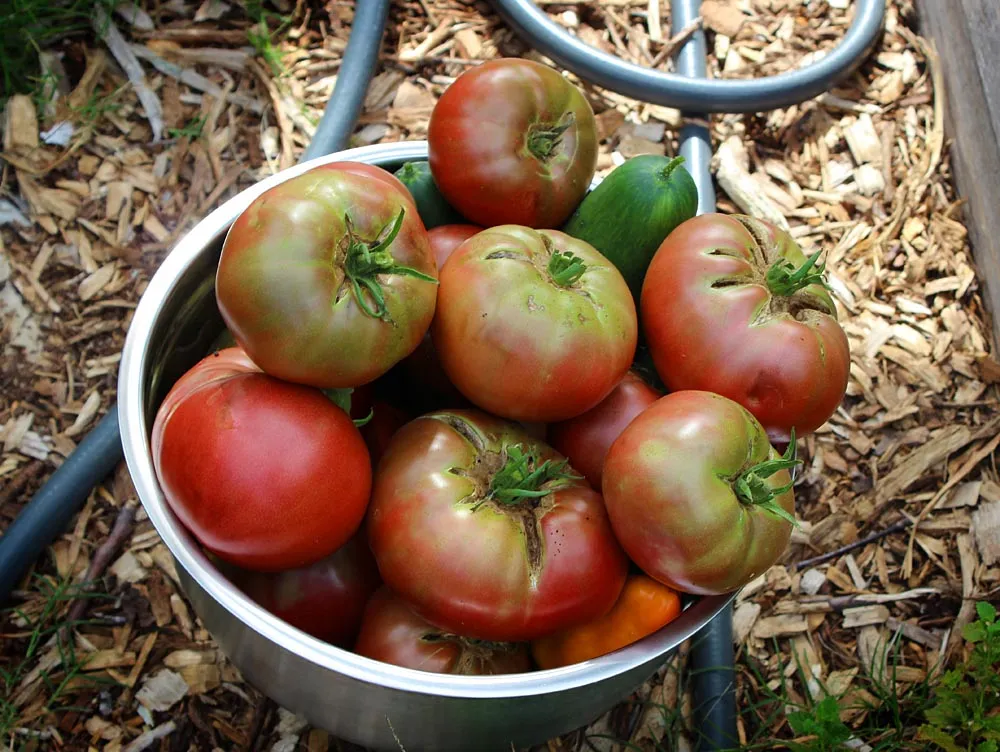
We are harvesting tomatoes before they are completely ripened on the vines because we have had a really dry Spring and sudden & large amounts of rain tend to split them and cause them not to store well. They will continue to ripen inside the house.




Pitcher Pump Connected to Seasonal Artesian Well
We have one seasonal artesian well and another solar well on our property. According to Wikipedia:
An artesian aquifer is a confined aquifer containing groundwater under positive pressure. This causes the water level in a well to rise to a point where hydro-static equilibrium has been reached. A well drilled into such an aquifer is called an artesian well.

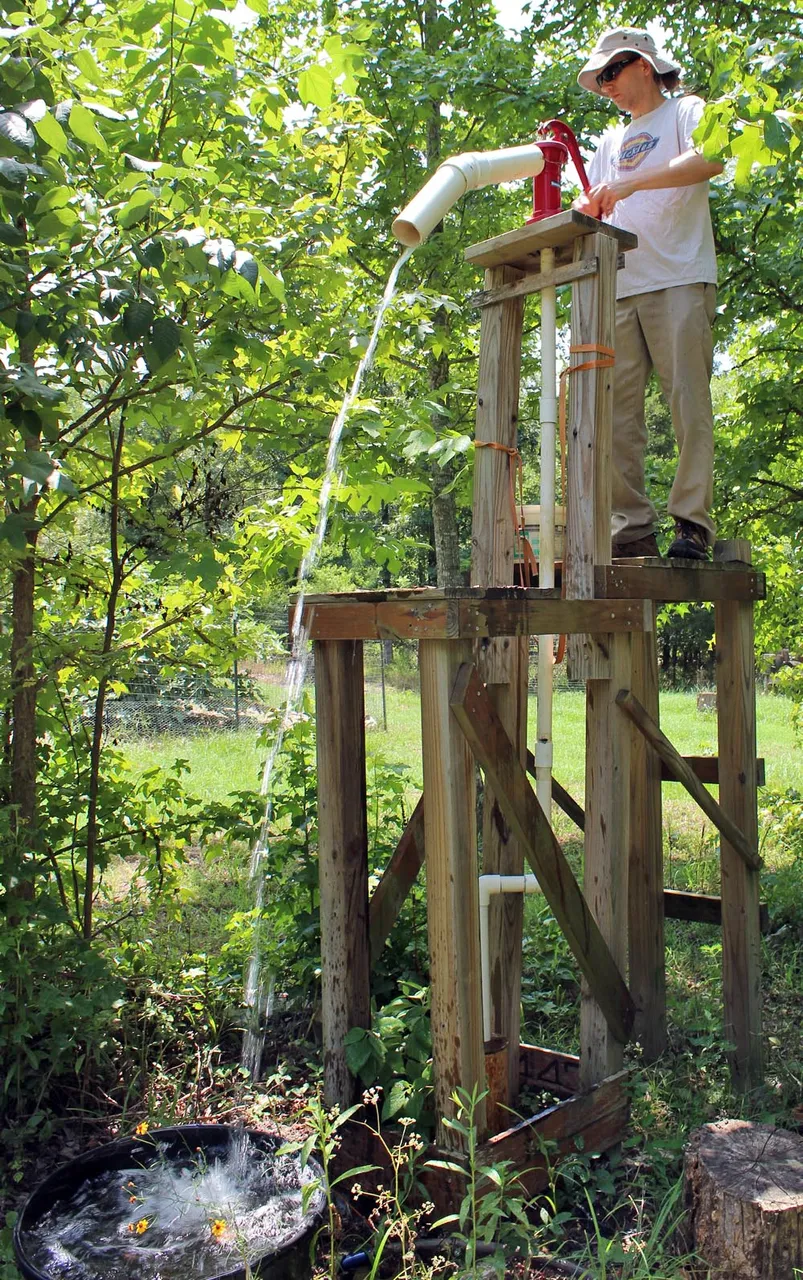

When we first started to garden, we only had two raised beds, so we purchased a hand pitcher pump and used the well water to water our small garden. However, over the years as our garden grows into a food forest, we upgraded to a solar well pump for the other well on the property. That well has a static level of around 12 feet and a pitcher pump did not preform well on it. These wells are our only water source for the food forest.




Red Coffee Cans
People who visit my garden have asked me why I have so many red coffee cans in my raised beds. This week's theme gives me a chance to explain the reason.
Worm Towers
I have worm towers in almost all my raised beds. It was one of the ways we used to add fertility to our food forest in the beginning. Worms play a vital role in the garden. They work & fertilize the soil, break down organic matter and naturally till the dirt & aerate the beds. They are a gardener's best friend. So how can we attract them to the garden? Build some worm towers, that's how.
All you have to do is put some food scraps in the towers to encourage worms to visit your garden beds. They will eat and break down the food waste. Their excrement will fertilize your beds with what we call worm castings. Have you priced a bag of worm castings recently? Good quality ones are expensive. This is a cheap way to utilize your own food waste and fertilize your garden with amazing worm castings.

You can always find my worm towers marked with red coffee cans in the garden. If you would like to build worm towers for your garden, you can find detailed instructions from Midwest Permaculture



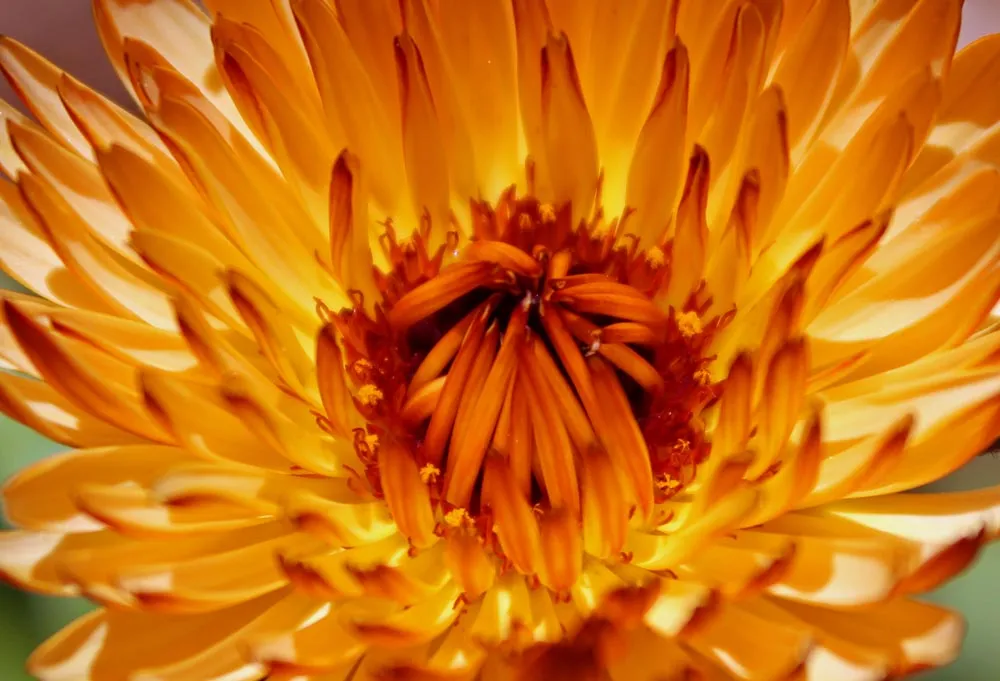
Calendula
I love calendula and have them all throughout the food forest. I use it as a trap crop for aphids. It exudes a sticky sap that whiteflies & aphids love. Calendula has thick, fibrous roots and will help build your soil if roots are left in the ground after the plant dies. Pollinators love calendula. It also attracts beneficial insects such as ladybugs, lacewings and hover flies. Calendula not only adds beautiful colors to the garden, it is also edible. You can make a fancy looking salad by adding some calendula petals. Calendula has healing powers as well. Calendula has powerful anti-inflammatory and anti-bacterial properties. It is often used for skin ailments.



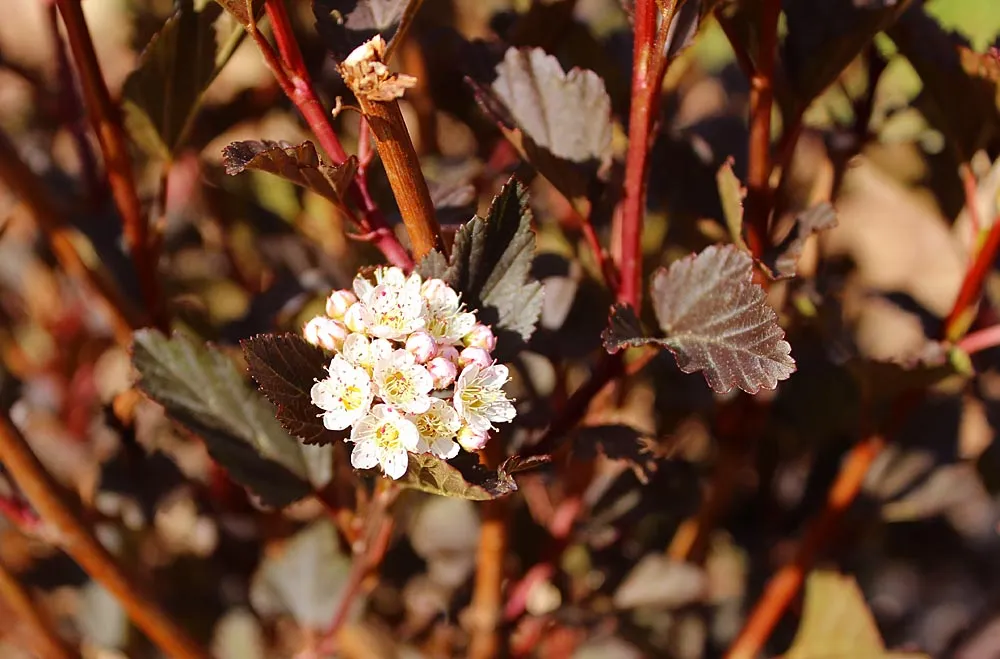
Ninebark
We added a new plant on our property this year - Ninebark. It has attractive foliage, interesting bark and beautiful white flowers. It is supposed to provide food for the birds, but since this is a first year plant, it is not yet producing red berries. I love the small white cluster of flowers against the red, peeling bark.



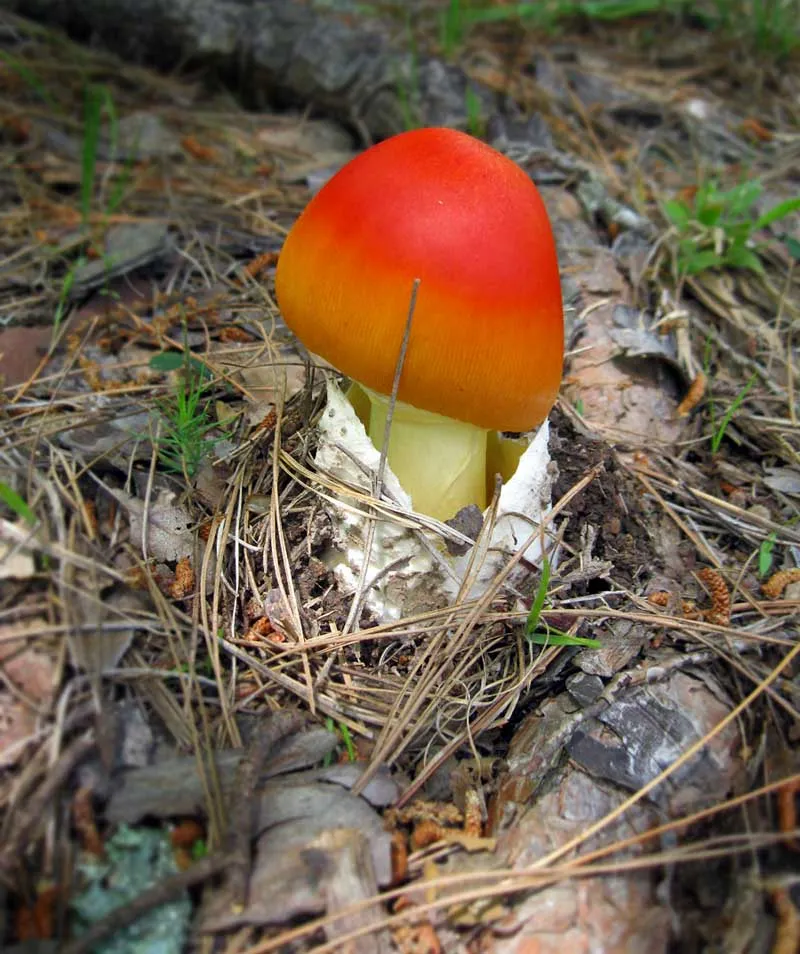
Mushroom
This mushroom showed up on the homestead after a heavy rain. We are not certain what type of mushroom it is. We think it is Amanita Caesarea (Caesar's Mushroom). It's so cute. Doesn't it look like a Mario Brother's mushroom? I feel like if I eat it, I would get bigger :-) .



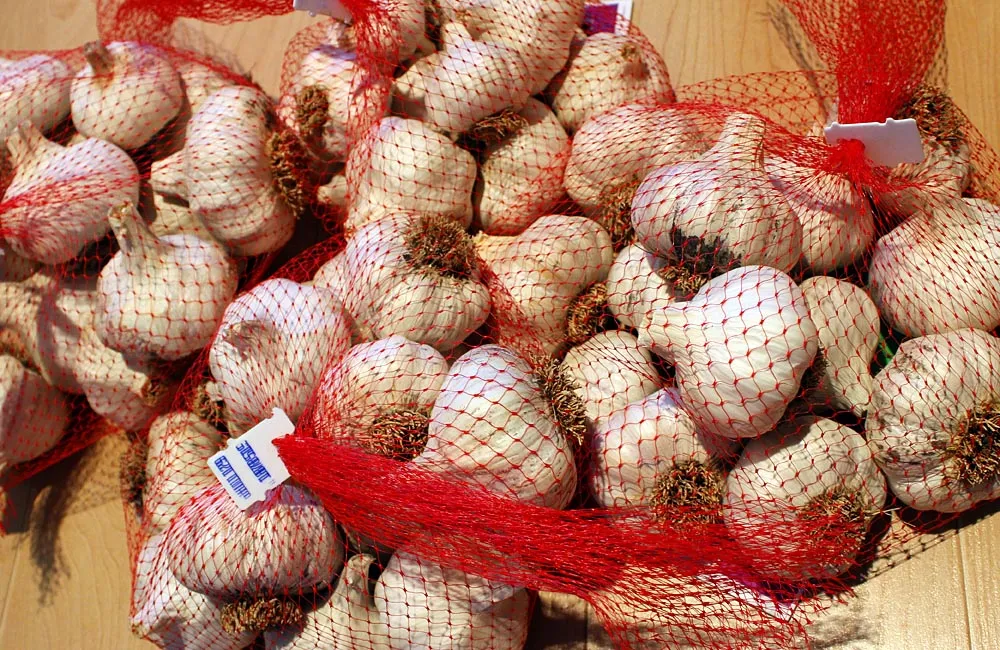
Garlic in Mesh Bags
All the garlic have been harvested and cured. They are sorted and put in poly mesh bags for storage. The house smelled like an Italian restaurant when we were sorting all the garlic. Feeling pretty accomplished seeing my organic garlic in the mesh bags. They look like little gifts from one of those fancy online gift package companies. And in a way they are, but it's a gift from the food forest to us. A simple showing of gratitude for having a little fun with dirt.
This is my entry to this week's Red on the Homestead contest. Thank you for stopping by.


